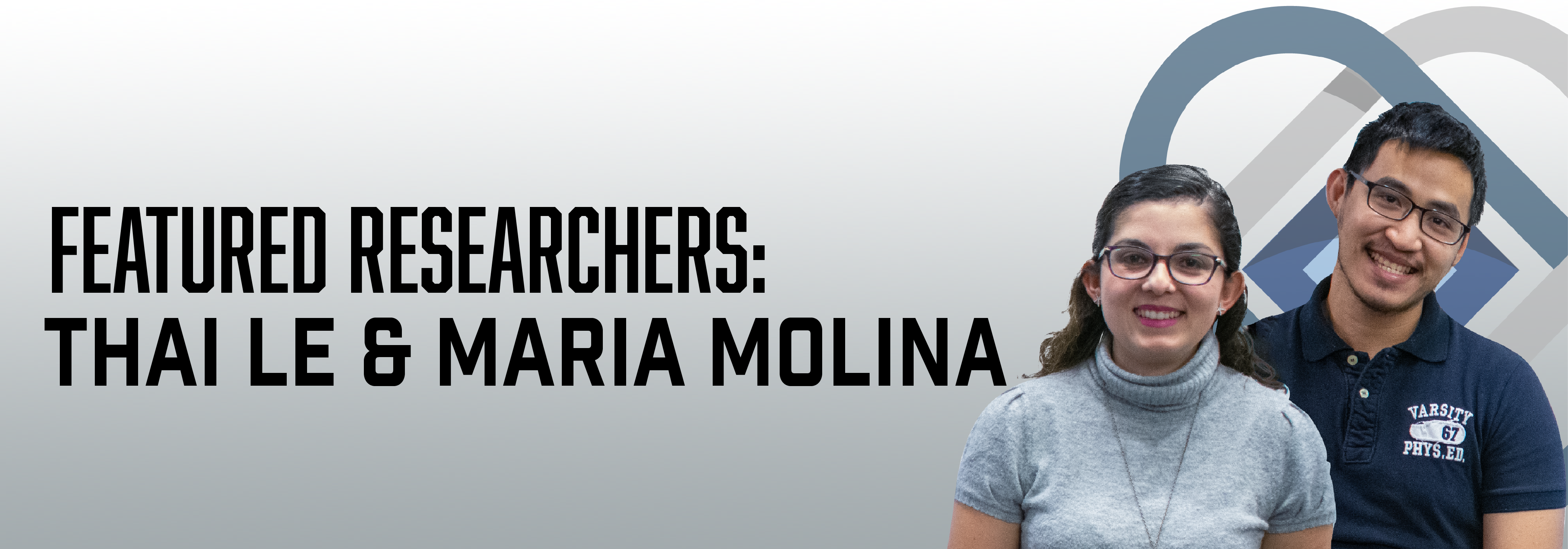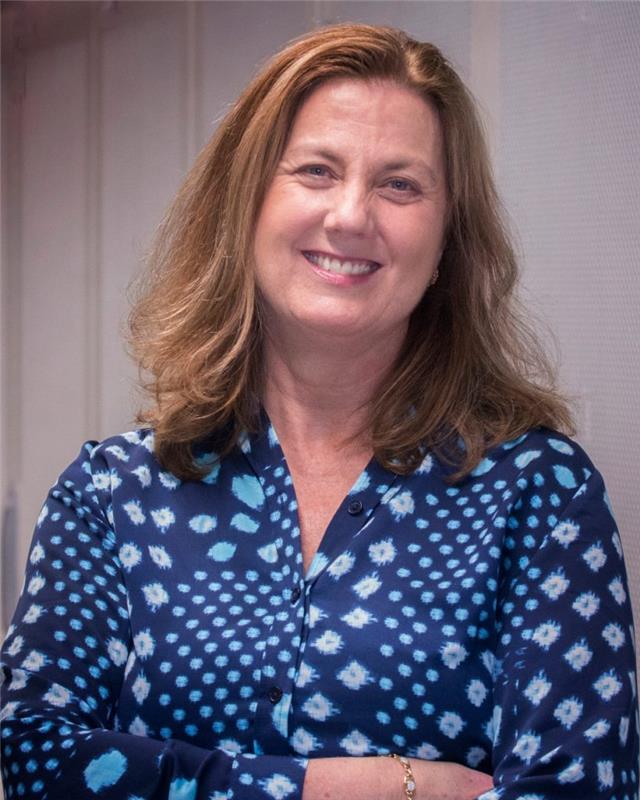
Get to know ICDS's fake news fighting researchers, Maria Molina and Thai Le.
Featured Researchers: Maria Molina and Thai Le
Posted on February 4, 2020Get to know our featured ICDS researchers!
Maria Molina, doctoral candidate in mass communications and Thai Le, a doctoral student in the College of Information Sciences and Technology, Penn State, are part of an interdisciplinary team that is working on a system that may one day automatically detect fake news. The project could have a huge impact on an issue that is harming democracy and discourse.
Le is advised by Dongwon Lee, the principal investigator of the project and an associate professor in the College of Information Sciences and Technology. and an affiliate of Penn State’s Institute for Computational and Data Sciences (ICDS) and Molina is advised by S. Shyam Sundar, James P. Jimirro Professor of Media Effects and co-director of the Media Effects Research Laboratory in the Donald P. Bellisario College of Communications and an ICDS affiliate.
Maria Molina
How did you get into this research field?
In my research I am curious about why people share content online, particularly the role of technological affordances at promoting sharing behavior. In our current online environment, we share so much content, ranging from photos of family and friends to updates of our lives to news. I started to notice that in social media all of these types of content live side-by-side, so I wondered how do people assess the credibility of all of these types of content, and how can we differentiate them. So, I started to study how and why people share false news online, examining both the nature and psychology of fake news.
What do you hope to accomplish with your research?
Fundamentally, the underlying motivation of my research is to explore the real-life and societal benefits of sharing, and the role of technological affordances in the process. I am particularly interested on exploring how features of technology can be used to promote sharing of positive content such as reporting your workouts in tracking technologies, and dissuading the sharing of negative content such as the spread of fake news via social media.
How does supercomputing enable your research?
A big part of sharing behavior online can be examined through data analytics. By looking at engagement behavior in social media, for example, we can understand the characteristics of the types of messages that people are sharing the most, and the role played by other features of the technology. For instance, we are currently working on a project examining clickbait characteristics. We can reach a better understanding of users’ sharing behavior and if certain characteristics of the headline matter most by looking at the engagement that articles online have received. The amount of data available online facilitates our ability to scrape content and analyze engagement at a larger scale.
What is your academic background?
I got my MA from New Mexico State University and I am currently a 4th year PhD student.
What are the big problems you hope your research solves — and/or the big opportunities you hope your research seizes?
In my research, I study the real-life and societal implications of sharing, and the role of technological affordances in the process. I specifically hope to investigate ways to dissuade the sharing on negative content and promote user’s analytical examination of content that is shared online. I am also interested on looking at ways that we can alert users about the nature of different types of content that we see online, be that real news, false news, opinion, satire, or any of the other types of content that we see online.
What important advances do you think we’ll see in your field?
I think AI technology will play a larger role in our information environment. I think that the future will be one where there will be mutual-augmentation between AI and human, in other words there will be a collaboration between both entities. That collaboration will in turn help increase productivity in many areas.
Who are your science superheroes?
Florence Nightingale (1820-1910) – I consider Florence Nightingale to be my science superhero because of her contributions to the social sciences, particularly the importance of communicating the sciences effectively. Although many do not know about her, she is the mother of infographics and investigated how to use graphics to explain statistical data.
Favorite hobbies/pastimes that have nothing to do with your professional work?
I have two hobbies, working out and dancing tango. The funny thing is that when I am stuck with a research project or have writers block, I always find inspiration after I have worked out or danced. Often times I also have ideas of projects that come while I am engaging in these activities.
Thai Le
How did you get into this research field?
I took a Machine Learning (ML) course on Coursera (by Dr. Andrew Ng) then decided to do research on how to teach ML to learn. Fake news detection: It is an important topic that has both research and practical values.
How does supercomputing enable your research?
Supercomputing enables me to cut down training time hence induce more effective experiment pipelines, especially for model selection. However, it also reminds me while supercomputer facilitates us to achieve better research results than ever, we as human beings (brain power) are still the decisive factor, not the machine.
What is your academic background?
My academic journey is little bit abnormal with lots of re-directions. I got interested in computer programming since I am 10, yet I have never really been serious about that. I majored in Chemistry during high school, and I graduated college with a business administration bachelor degree in 2015. During my third year at of my college, I got into ML after taking the ML course on Coursera, which made me decided to change to computer science related major. I then joined the MSC at computer science and applied math department at Illinois Institute of Technology. After my 1st year, I joined PSU as a PhD student in IST department.
What are the big problems you hope your research solves — and/or the big opportunities you hope your research seizes?
Fake content generations and their countermeasures. For example, I am working on various aspects of fake news, not only how to detect but also how to generate them. These two processes always go together, pushing this research direction forward.
What important advances do you think we’ll see in your field in five years?
In five years, the advances — and also a challenge– will be in how to teach machines to generate realistic multi-modal content (e.g. languages) and as well as how to distinguish them (human generated and machine generated).
Who are your science superheroes?
Prof. Davar Pishva from my college. He is the one putting the necessary seeds early of my research career.
What is something that people are surprised to discover about you?
I can speak 3 languages: Vietnamese, Japanese and English

